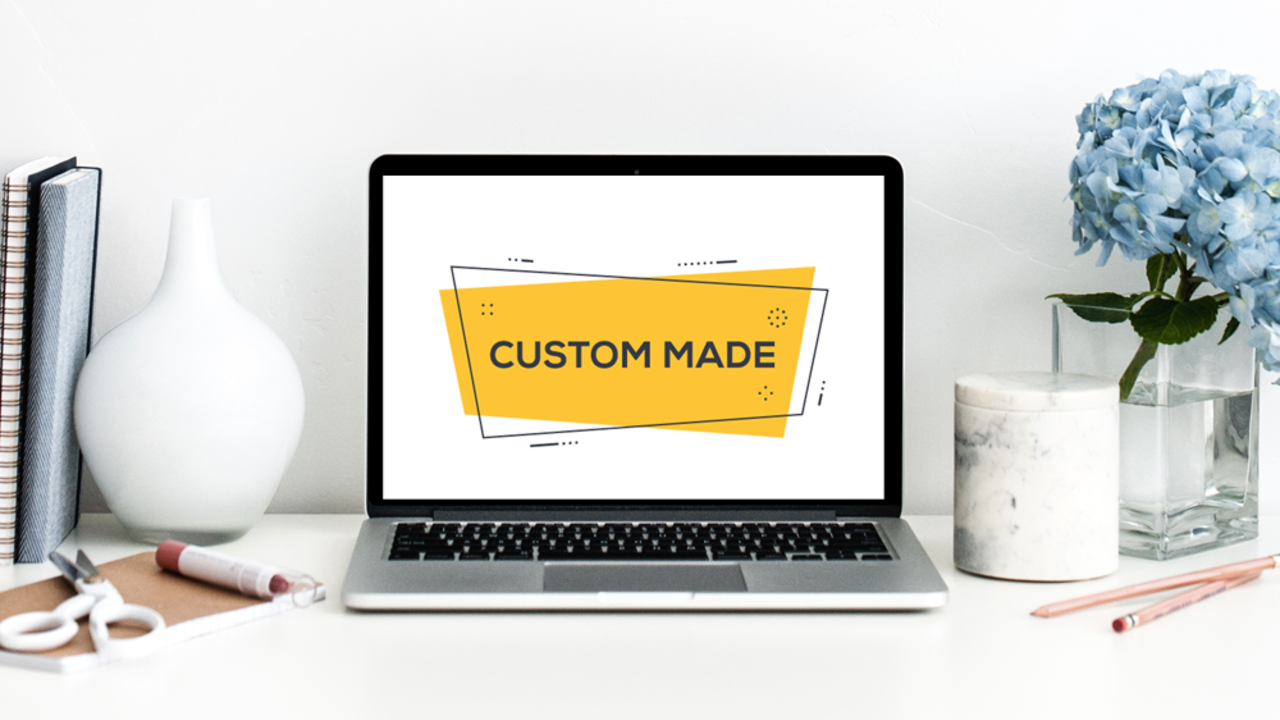
What Does Custom or Customize Really Mean When it Comes To Your Website?
(9-minute read)
Although the words custom and customized are constantly thrown around when it comes to website design, I think it’s important to share what each word actually means so that you’re better informed the next time you’re shopping for a website designer. FULL DISCLAIMER here - I know that this is a touchy subject with graphic designers, but I think this is a great topic to unpack especially due to the discrepancies and confusion.
Being married to a software engineer, I am often schooled about what the word “custom” really means to a person in tech as opposed to how it gets used by marketers, graphic designers, and website designers. It never used to be this confusing, but just as technology continues to evolve as new innovations emerge, so does the context of the word custom and how it is used.
Back in the day when the digital revolution exploded and the world wide web was released to the public (around the 1990s,) there were designers and there were developers. Designers created the artwork and aesthetics of the brand. The brand’s founder was responsible for providing the other assets like the copy (or wording) as well as the images needed for the website. And all these assets were then passed on to the developers who coded the functionality of the webpages.
To help put this into context, think about the role of an architect who designs high-end, luxury homes. The architect creates the design from scratch, meaning that there was no template or previous reference used. He or she focuses on the design of the spaces the luxury home would have… the foyer entry space, the grand staircase, the gourmet kitchen, the great room, the master bedroom suite with walk-in closets. (Can you tell that I have spent a little time thinking about my own luxury dream home?)

Before the home can be built, the architect has to connect with an engineer in order to approve his/her designs and verify that the spaces designed will be structurally sound. Once the designs are verified and approved, the architect and engineer would then work with a contractor who would build the physical structure. So if you were to think of a website, the graphic designer is the architect, and the web developer acts as both the engineer and contractor.
Fast-forward to today, and there are new roles like graphic designers and platforms like WordPress, ShowIt, Squarespace, Wix, and Weebly that exist and make it easier to create websites without the need to know how to code. The lines of design and programming are blurred with the latest technology tools out there that promote the idea that no coding is required.
As a result of this evolution of technology, the words custom and customized have various levels:
- Level 1: When people use the word custom or customize to describe the personalization of a complete template website that allows you to upload your content, branding colors, and maybe even the fonts for your brand. Examples of these are complete website templates designed on various platforms like ShowIt, WordPress, Shopify, Squarespace, Wix, Weebly, and several others that you purchase that have been pre-designed. If you extend this to other platforms, think of applications like Facebook, Instagram, or any other platform where you can add your logo and branding colors.
- Level 2: When people use the word custom or customize to describe the use of a plug and play tool where you are able to use plugins and add additional functionality that can extend more levels of personalization. Examples of these are WordPress or Shopify templates where you can purchase additional plugins or apps to add additional features. If you extend this to other platforms, think of email marketing tools like Mailchimp, FloDesk, or Emma.
- Level 3: When people use the word custom or customize to describe the ability to use a platform that is already structured but gives you the ability to have webpages with a clean canvas so that you can add design elements and functionality that is not based on a previous template. This is typically the way that graphic designers or web designers use the word custom when they describe their custom package options. Although several platforms like Squarespace, ShowIt, Kajabi, Wix, Weebly, Shopify provide this ability. There are several platforms that allow you to start with a clean slate and "design" or customize the features you want.
- Level 4: When people use the word custom or customize to describe a website project that will be coded entirely from scratch with no foundation or structural platforms like WordPress or Shopify. You have 100% freedom to create anything you want without any limitations from a pre-programmed framework. This level of customization requires the involvement of a software engineer who can code and engineer the features and functionality of the webpages. Although this level the most labor-intensive and time-consuming, you have the most freedom and flexibility to create a totally unique website experience for your website visitors.
So whenever you see the words custom or customize applied to website design, applications, or platforms found on the web, I hope that you think of these levels in order to provide some clarity as to how it is being used.
As always, please reach out if you have any questions or comments.
xo,
![]()


